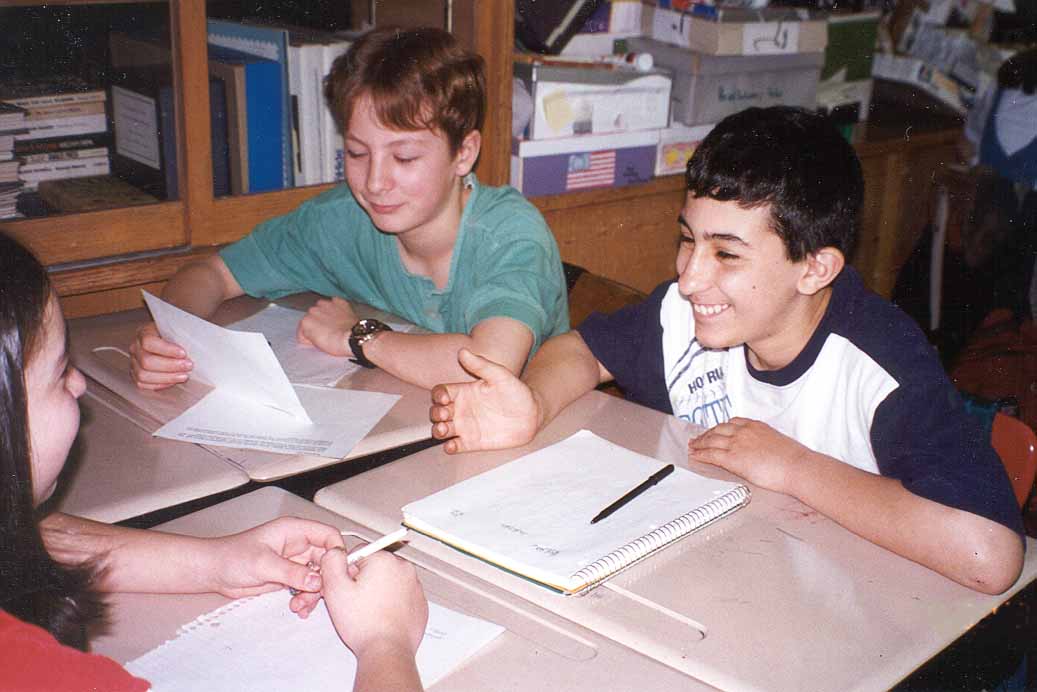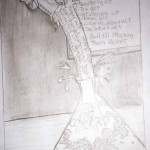Helping Students Define Primary Source Documents
 The primary source document has recently received more and more attention in national and state standards for all education levels. And for the gifted student, the primary source document can stimulate and challenge a population of students who are sometimes bored by textbooks that regurgitate important sources in pedantic and watered-down language. Still, incorporating the primary source document into the curriculum can prove to be challenging for teachers charged with this task. For, you might ask, what “exactly” is a primary source document? How can we judge their legitimacy? Where can we find appropriate primary sources, and how can we train gifted students to evaluate and choose them wisely for research purposes?
The primary source document has recently received more and more attention in national and state standards for all education levels. And for the gifted student, the primary source document can stimulate and challenge a population of students who are sometimes bored by textbooks that regurgitate important sources in pedantic and watered-down language. Still, incorporating the primary source document into the curriculum can prove to be challenging for teachers charged with this task. For, you might ask, what “exactly” is a primary source document? How can we judge their legitimacy? Where can we find appropriate primary sources, and how can we train gifted students to evaluate and choose them wisely for research purposes?
At Simon Baruch Middle School #104, in New York City, teachers gathered for a staff development seminar in which we would try to determine the meaning of the term “primary source document.” I arrived with my own questions about primary sources and gathered them into one of the larger classrooms. My “students” for the day were busy pondering their own questions about the subject. To get the seminar underway, I decided to use the “Think, Pair, Share” cooperative group strategy. I asked teachers to brainstorm a definition of a “primary source document.” At first, they scribbled busily, often looking up or over to see how others were doing. Then they shared their information with a partner in their cooperative group. When I finally asked them to share their responses with the whole group, the class erupted with debate. Is a primary source a firsthand account only of an event the writer was involved in? Could it be a witness’s account of an event? Could someone who lived during the time of the event and heard about it through other sources produce a primary source document? Do contemporary editorials count? Finally, teachers were asked to consider the meaning of the terms “original,” “editorial,” and “derived information.”
Teachers then considered other questions that arose from our discussion, as they worked in cooperative groups of four. They were first concerned with the legitimacy and truthfulness of documents that might be considered primary sources. In today’s world of social media, we need to help students understand the legitimacy of the source.
- How do we know, as teachers and readers, whether the account we are reading is, first, truthful, and second, impartial?
- Do biased accounts of events or situations have a place in the classroom? If so, how should such documents be presented?
- What motivations are important to consider when discussing the writer of a piece?
- Did the author have a goal in mind when he/she wrote the account? If so, could that goal have altered the way the event was represented?
Of course, such questions then raised further questions about how to prepare students for studying primary sources and how to teach them to search for clues about a writer’s intent or purpose when considering such documents. How we view primary source documents, it seems, is almost as important as understanding what they are.
When the teachers finished brainstorming and considering the problems involved, we met again as a whole group to think about how we might respond to the questions posed. Though some uncertainty still remained, we were able to reach some conclusions about primary source documents. For instance, the teachers all agreed that an editorial could be considered a primary source document only if the writer witnessed the event he/she editorialized. Second-hand accounts could not be considered primary source documents. They also agreed that for teachers and students alike it is very important to know about the circumstances surrounding a writer and the creation of a particular selection. Scrutinizing documents, then, was seen as an integral part of examining primary source documents.
Because we were able to reach some consensus on some types of primary source documents, we were able to list them on the board as a group. Some of the items we settled on as primary sources include:
Cartoons Eyewitness Testimony Artifacts Paintings
Debates Notes Blueprints Maps
Diagrams Posters/Broadsides Advertisements Home Movies
Interviews Pamphlets On-Site Visits Logs
Journals Documentaries Magazines Newspapers
Laws Diaries Speeches Legal Documents
Letters Photos Films Televisions Reports
Sculpture Architecture Caricatures Political Cartoons
Songs/Music Plays Poems/Prose Drawings
Of course, teachers were still wary about issues of legitimacy and truthfulness and the way in which documents should be presented to students. For instance, a poem can be considered a primary source document, but students should be made aware that a poet may have a particular political view or agenda that might be evident in the poem. Indeed, the poem itself may have been composed as a vehicle to further a political or social agenda. Considering the point of view may be just as important as considering the poem itself. Giving context to primary sources affords students the opportunity to see how history is recorded, and how the lenses through which we view history are often distorted or altered by the perceptions of the creator of the primary source. Truth, to be sure, is an elusive term, and students can gain a greater understanding of the slipperiness of the term through an examination of primary sources that describe or depict the same event.
When teachers had completed this exercise, I asked them to form instructional level groups: sixth-grade teachers worked together, seventh-grade teachers worked together, and so on. Each group was given a chart; along the top of the chart were written the major topic areas to be studied throughout the year. Along the side were various types of primary sources. I asked teachers to fill in the chart as best they could with specific examples of primary sources they could use for each area of study. This curriculum map, when filled in with many suggestions, could serve as a useful reference for teachers in search of primary sources they could use throughout the year. The chart also allowed teachers to recognize which areas they had plenty of information for, and which areas needed to be filled in. Some teachers even left the room to fetch primary sources they had used in the past, so they could be copied and distributed to other teachers for future use.
Teachers were satisfied with the progress they had made in the seminar. However, many were still perplexed by the term we had originally gathered to consider: the primary source document. Had we reached a conclusion to this discussion? Many felt that we had not. Others decided that the exercises in the seminar should be repeated with their own students so that they could generate their own opinions and develop a better understanding of the term themselves. Indeed, I am not convinced we have fully or adequately defined the term.
© 2001 by Andi Stix, Ed.D.,
Under what conditions must a document be created in order to consider it a fair and reliable account of the events that occurred? In what ways can we help our students define what “legitimate” primary source documents look like versus those they should avoid?
Andi Stix is an educational consultant & coach who specializes in differentiation, interactive learning, writing across the curriculum, classroom coaching, and gifted education. For further information on her specialties or social media, please email her on the Contact page.







